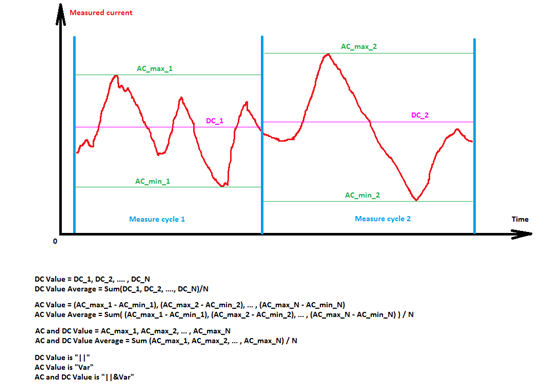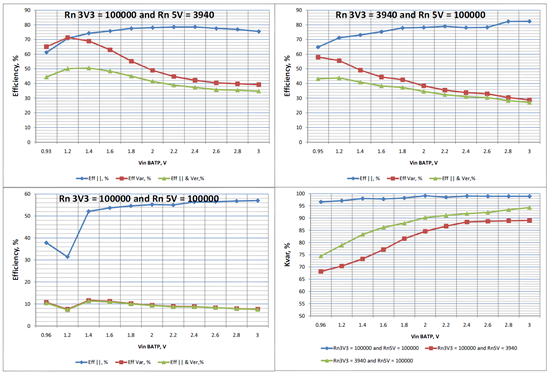Hello!
I use two TPS61028 non isolated DC-DC in portable device, which supply from two batteries (two cell 1,2V each).
One DC-DC is used for digital 3,3V supply and other DC-DC is used for analog 5V supply.
I attach both schematics.
7127.Sch_Digital_Power_Supply.pdf
7128.Sch_Analog_Power_Supply.pdf
I changed input voltage (net Vin BATP) and I measured voltages and current consumption of my portable device with two working DC-DC.
I cann't reach efficiency values from TPS61028 datasheet.
I used multimeter Agilent U1252B for current consumption measurement on net VinBATP net and Agilent DSO-X 2012A oscilloscope for average (average time is 10 ms) voltage measurement.
Multimeter can measure current in three modes: AC, DC and AC+DC. I attached picture for understanding difference between modes:
I measured current consumption in all three modes and in case without load, with resistor load 3940 Ohm on 3,3V net and with resistor load 3940 Ohm on 5V net.
I attached results of my measurements:
The graphs of efficiency is below:
I have a few questions:
1. Why current consumption of TPS61028 without any load (I measured about 100000 Ohm) is more than 2*45uA = 90 uA (I used two DC-DC)?
2. What kind of current consumption value is used, when measured efficiency in TPS61028 datasheet? (DC value or AC+DC value, or AC value)
3. Why efficiency of TPS61028 is low (about 15% less)?
Input and output capacitors I placed near IC without vias and so on. I placed inductor (10uH) on bottom side of PCB and connected with IC by means of two parallel vias.
4. May I increase efficiency if I will use TPS with fixed output voltage instead adjust version?
With best regards, Maxim Galkin.
P.S. Sorry for my bad english.



